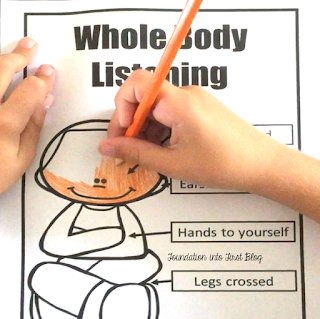How do you make sure your students really understand your classroom rules?
You can place posters all over your room. They can be bright and engaging but at the end of the day, like any piece of advertising, they need engagement. Students need to read these posters and truly understand them. They will notice them the first time they are put up but how often do you go over the rules again and again throughout the year? Like busy teachers everywhere, you let little things slide until the only rule left is the 'hands up' rule.
To see if your classroom rules posters are effective ask yourself:
- Can my students name ALL the classroom rules?
- Do my students know what 'sitting quietly' looks like, sounds like, feels like?
- Do students know what to do if somebody is breaking the rules?
To have rules, means you have to have consequences. Make sure your consequences are clear, within school policy (some schools don't allow students to stay in after school for detention) and make sure you are consistent with the rule breakers.
Students also need to understand what the rule means.
Let's take the rule, that almost every school has; sit still and do not call out.
Do students KNOW what 'sitting still' means? You assume they do but very young children may not have that clear understanding and older children may have come from different backgrounds where 'sitting still' may have meant something different. You will need to model 'sitting still' for children of all ages.
MODELLING
I usually draw a picture on the whiteboard or show them a poster of a child sitting and point out all the ways they are sitting quietly. This technique is called whole body listening.
- EYES on the teacher (not looking around the room)
- EARS are open and listening to the teacher
- HANDS are to yourself (either crossed in lap or by sides but not touching anybody else)
- LEGS are crossed (not to the side or stretched to the front)
- MOUTH is closed (not talking or humming)
You won't need to model this more than a few times at the start of each lesson and as the weeks roll by your students will understand what you mean by sitting quietly. You can keep a poster up to point to occasionally without speaking as a non-verbal reminder to do the right thing.
Tip: I taught with hearing impaired students and learnt the sign for sit and quiet. I highly recommend you use these signs every time you mention sitting quietly with your class. When you go to parades or special assemblies they become invaluable to use with your class when you can't make a sound. Just catch their eye and do the sign. They will know what you mean!
Always, always, always use positive behaviour management in your class. I sometimes forget and when behaviour is getting out of hand I remember to use my old training of positive behaviour management and ZAP it's like magic... they all behave instantly! This is when I kick myself for not using it sooner! Positive behaviour management means focusing on the good behaviour you want students to demonstrate, rather than picking up and focusing on the bad behaviour.
Example:
(noisy class)
"Oh goodness I can see Jason down the front here and he's showing me some lovely whole body listening. His eyes are on the teacher. His mouth is closed. His arms are folded. His feet are to himself" and go on to describe the perfect way this student is sitting quietly.
If you want to check and see if it's really working (other than the noise stopping right away) you can add "...and he's sitting so straight!" and watch all the students suddenly straighten their backs to sit neater! Make sure you start to praise other students around the room who are doing the right thing.
At the start of the school year, I introduce students to my rule posters and then follow up with some hands-on activities to make sure students understand. I model myself, reinforce when other students do the right thing and even get students to take ownership by letting them design or make a poster of rules for the classroom wall. It is, after all, THEIR classroom.








No comments
Note: only a member of this blog may post a comment.